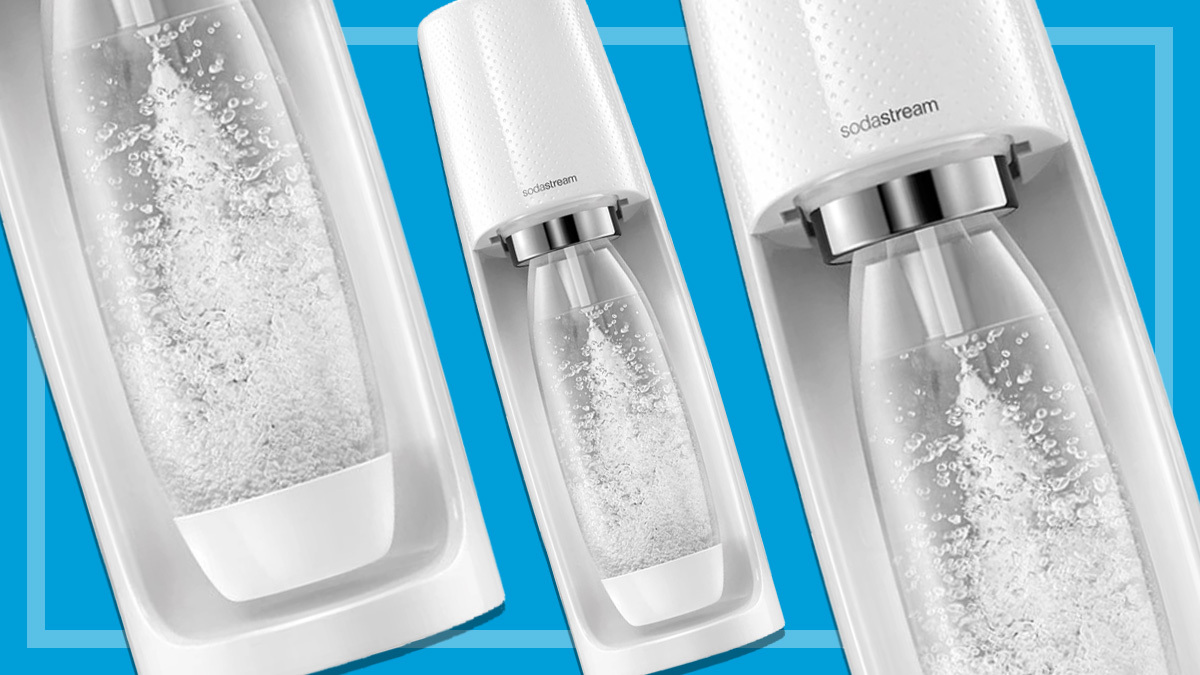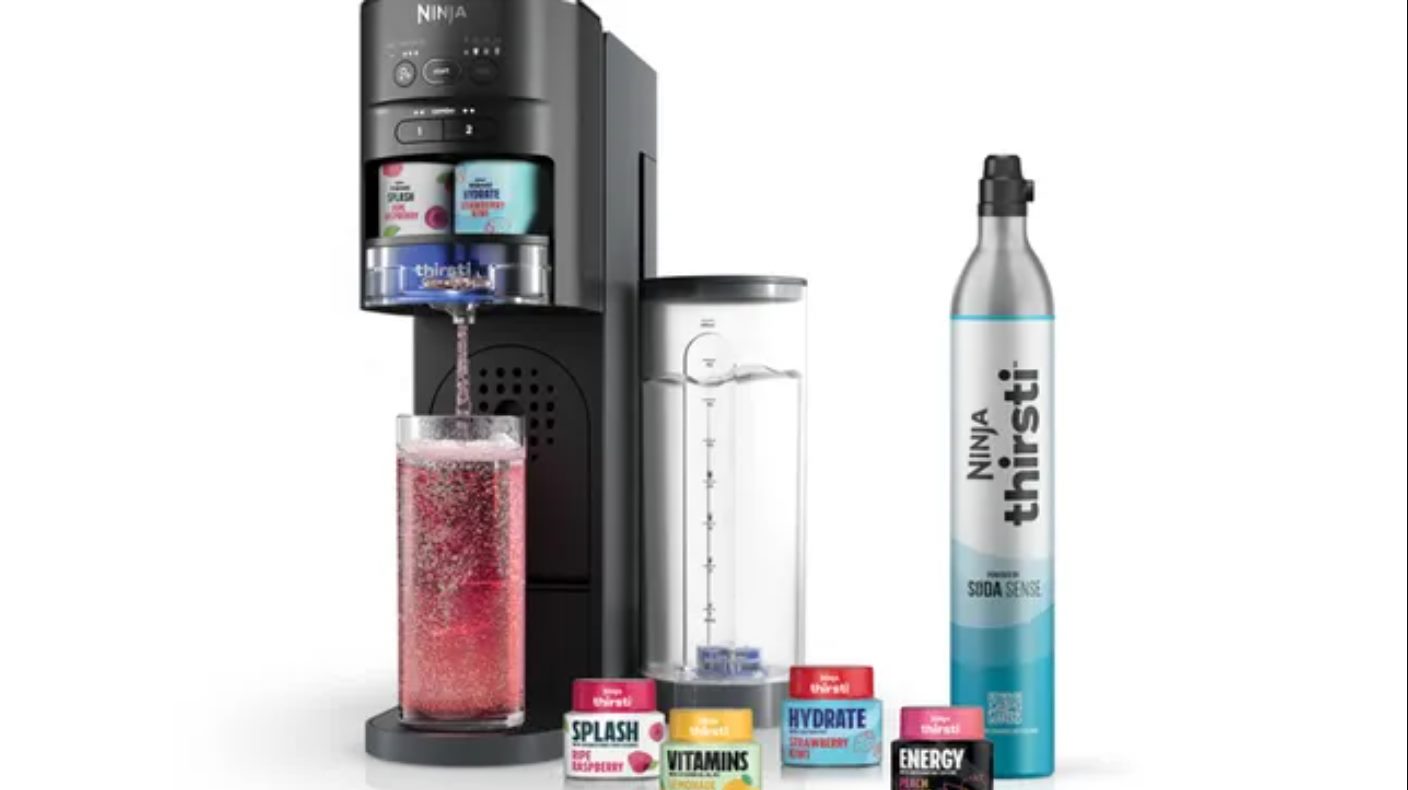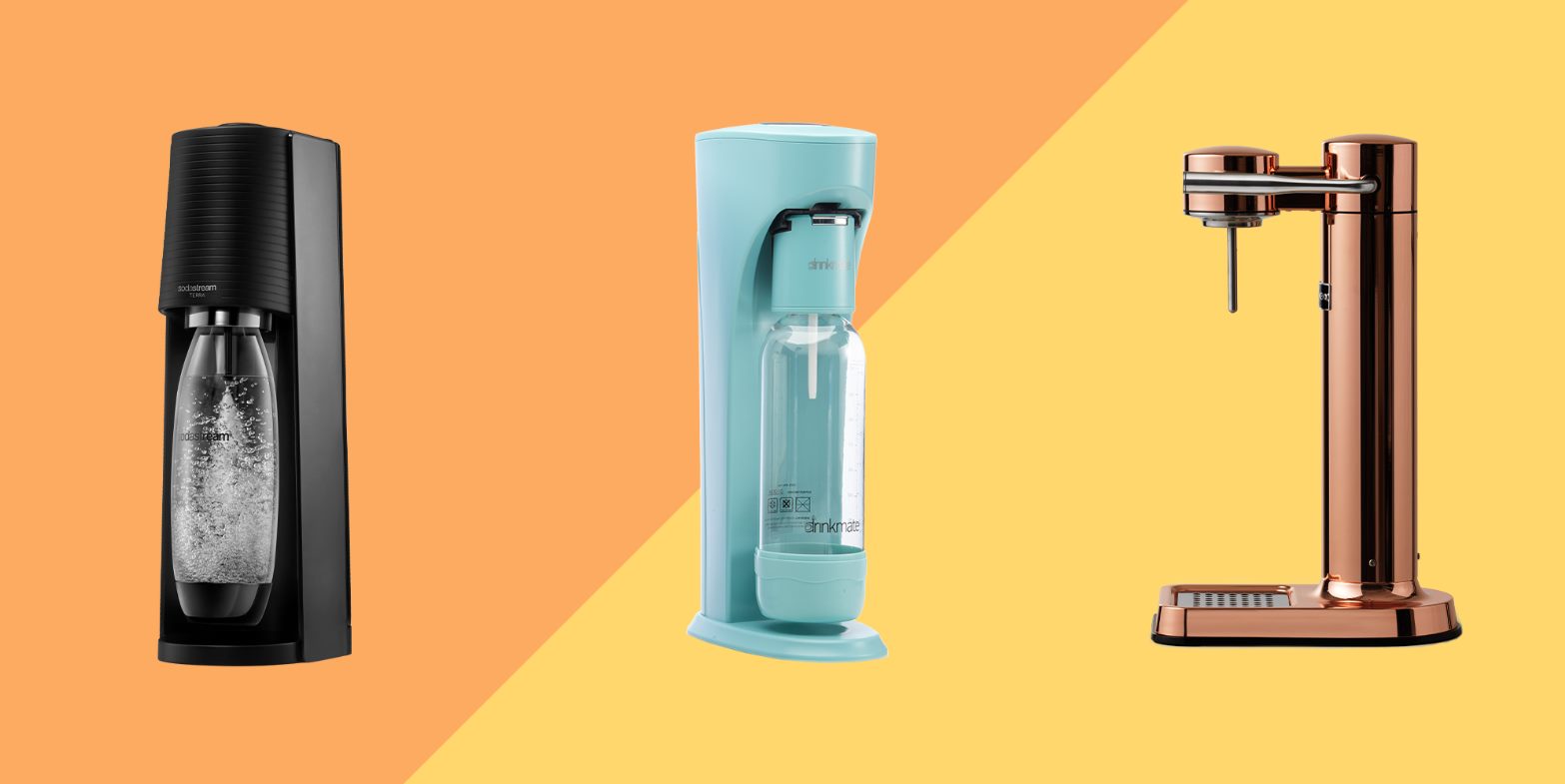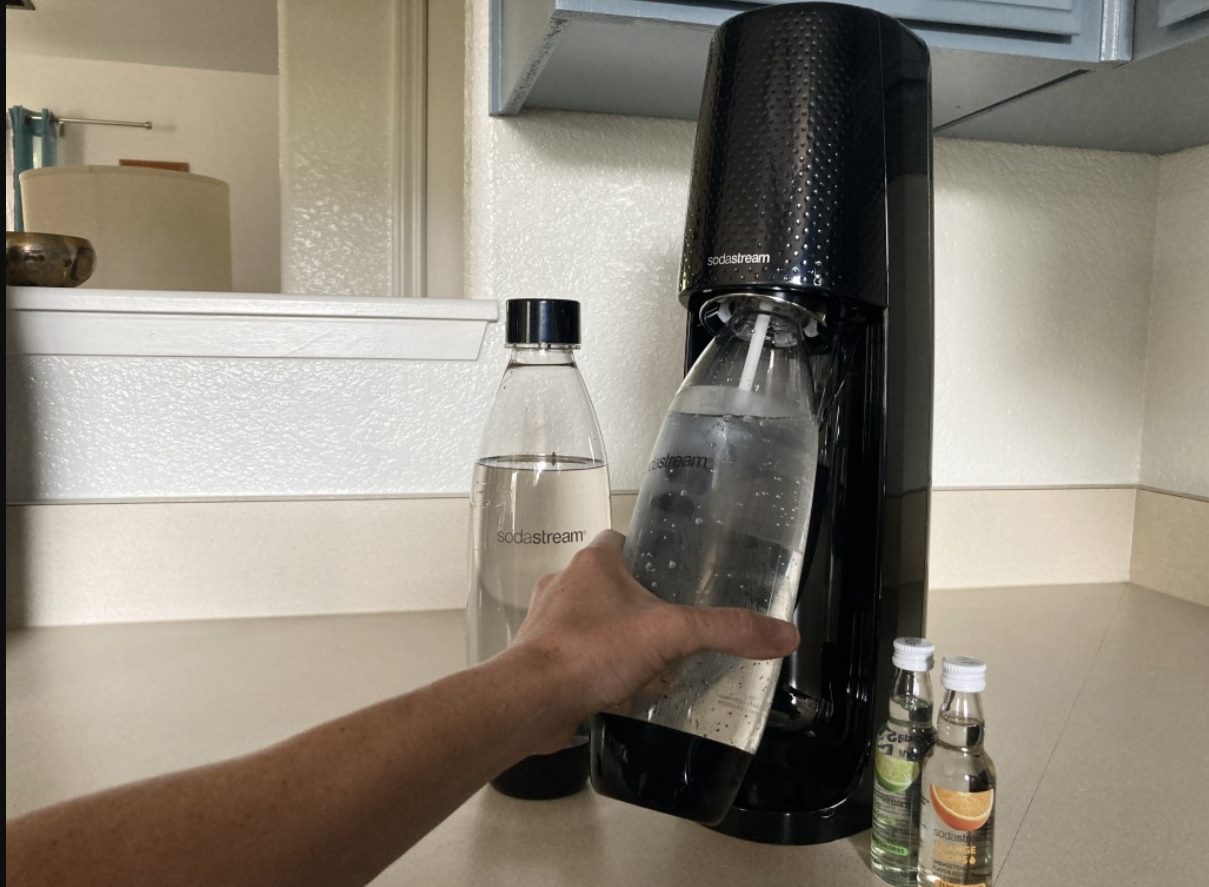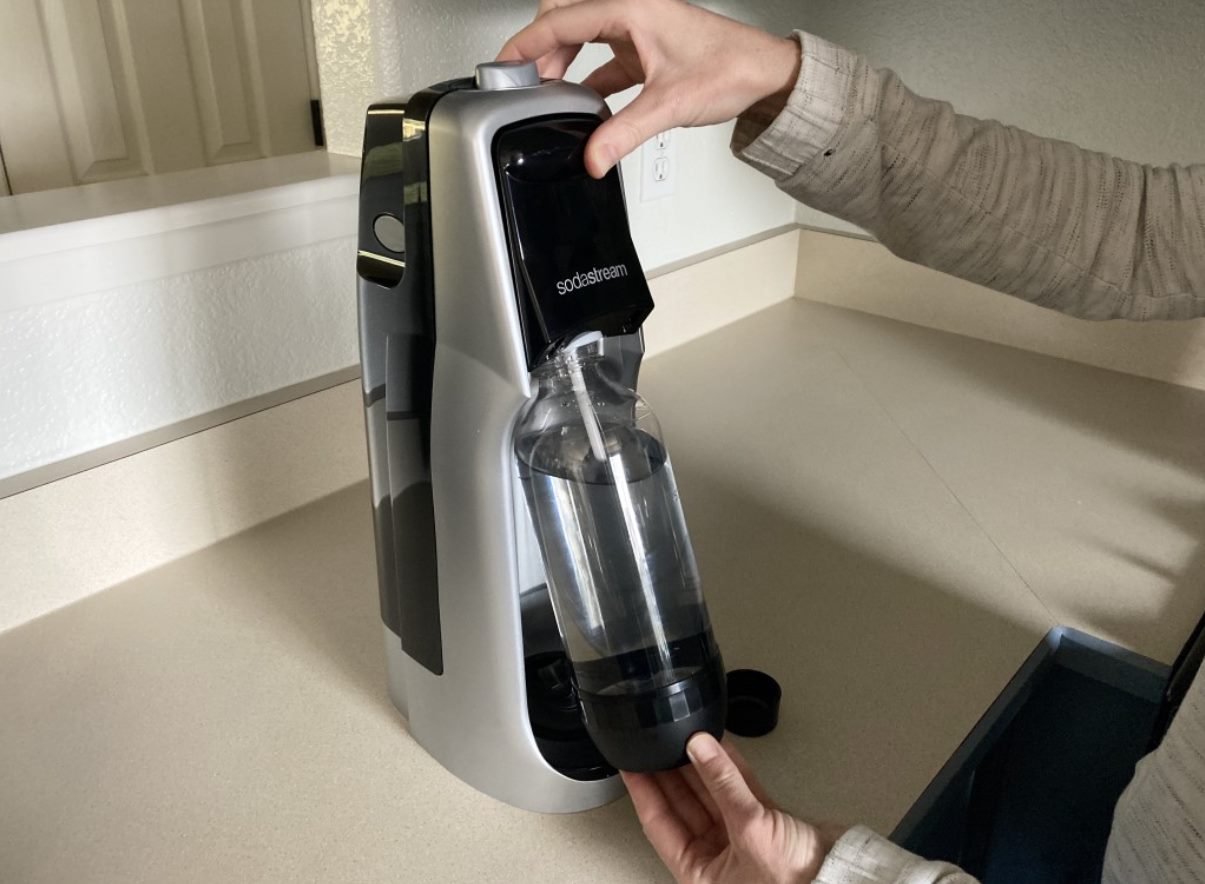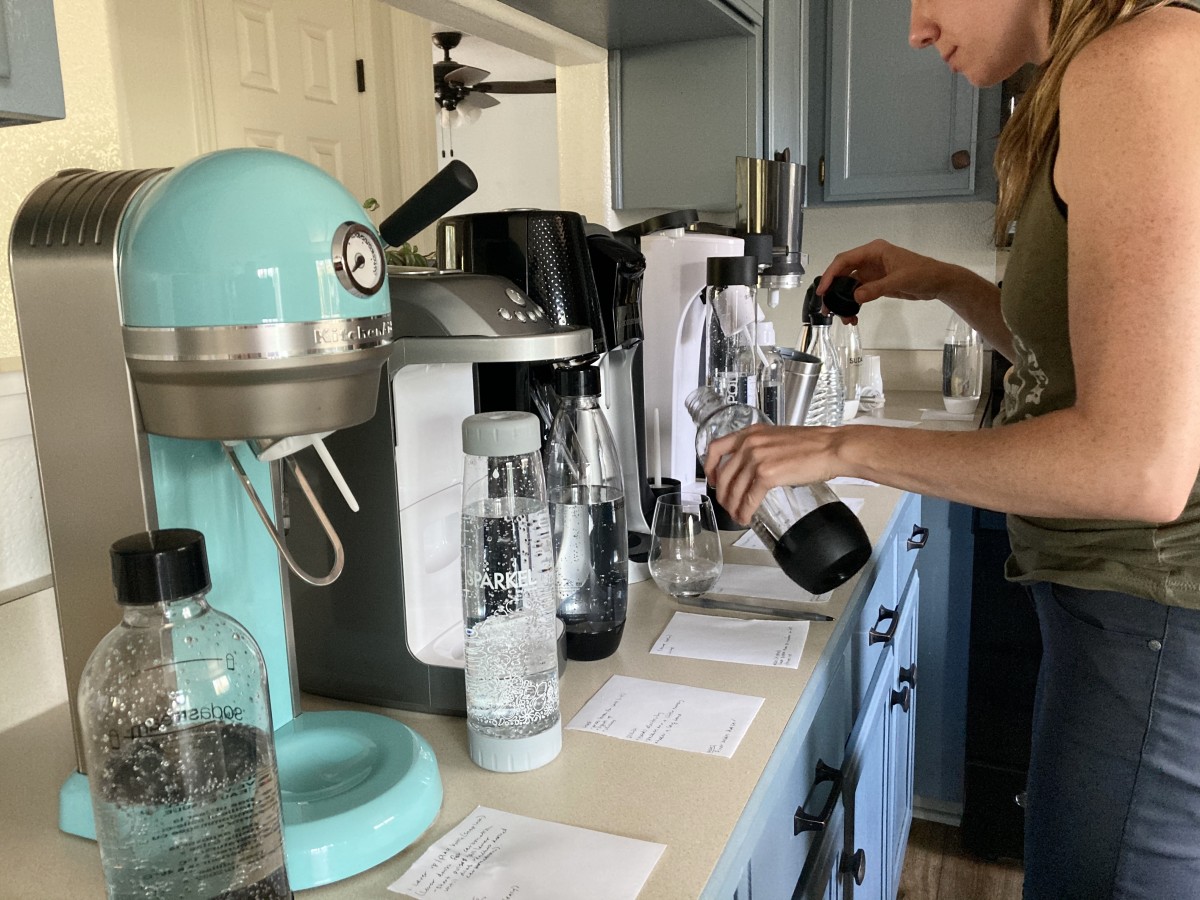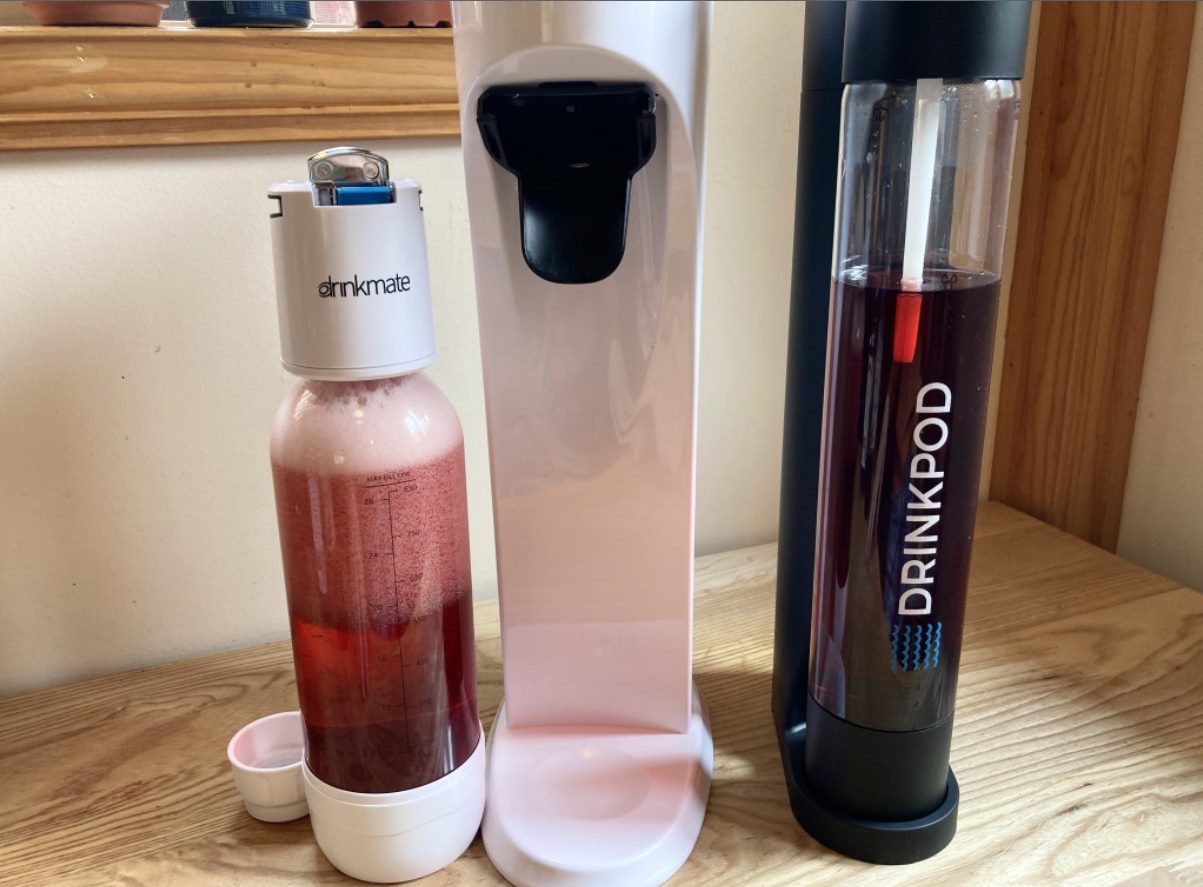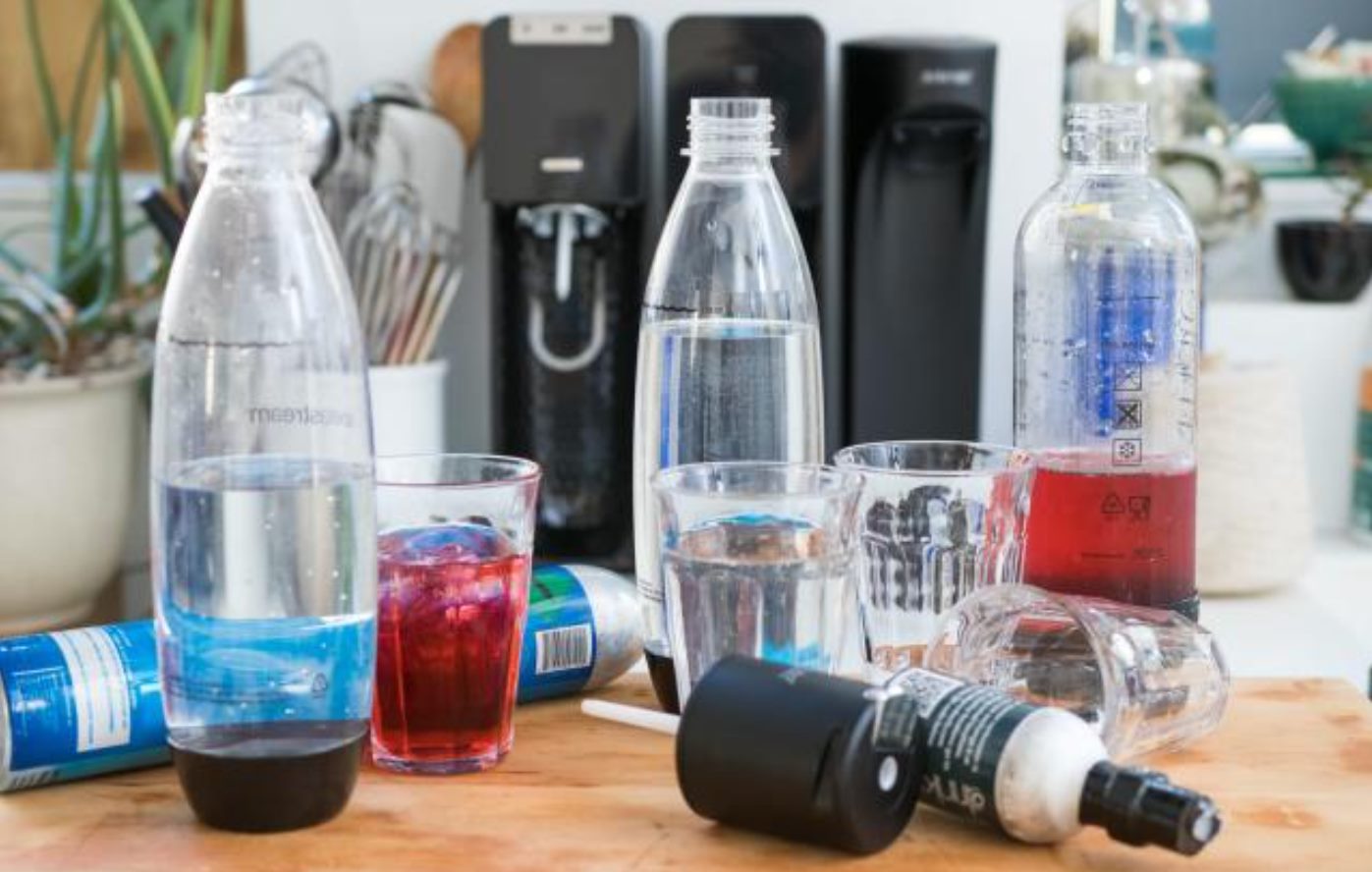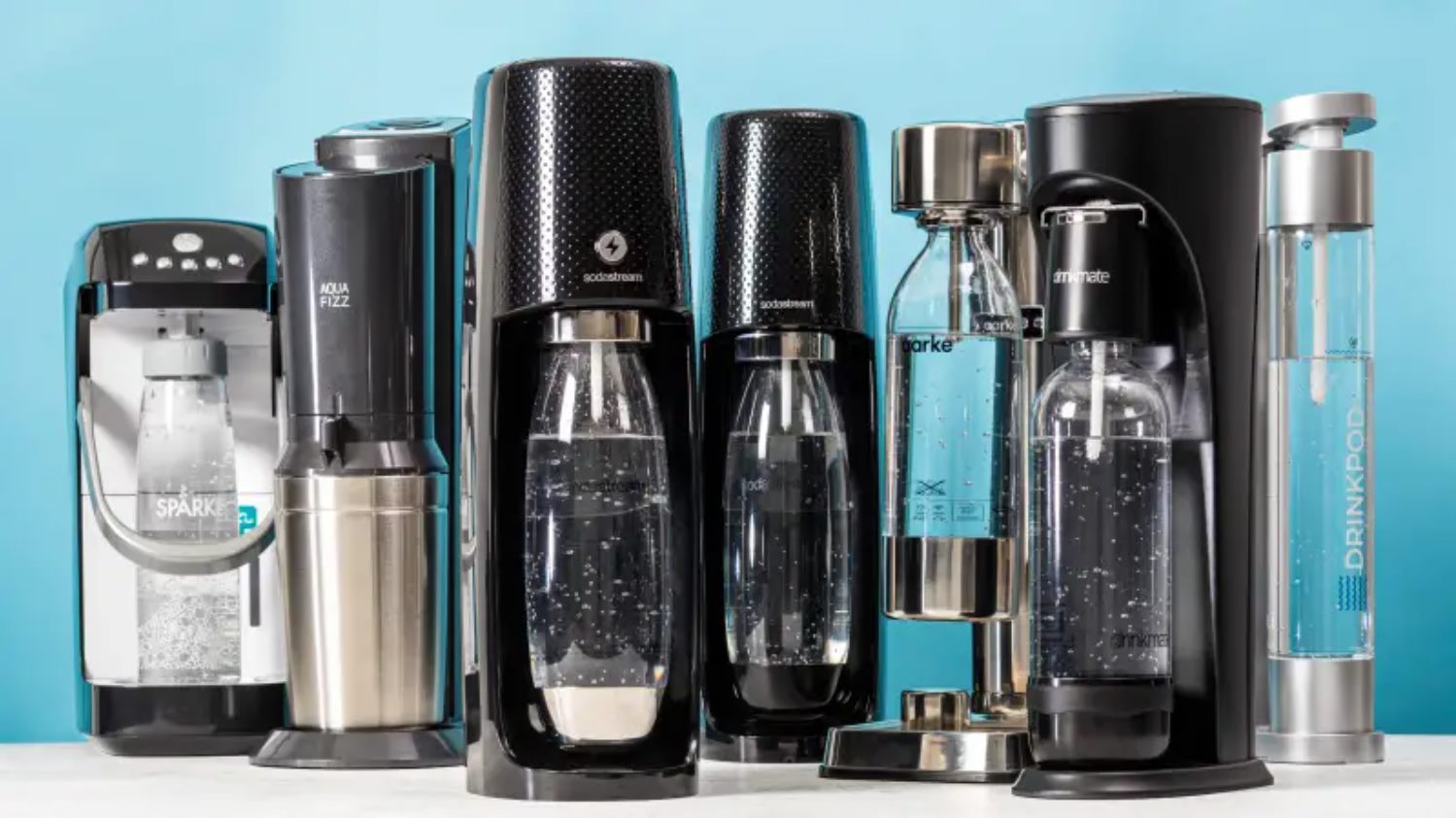Introduction
Do you enjoy fizzy carbonated beverages like soda or sparkling water? Have you ever wondered how they are made? That’s where a soda maker comes in. A soda maker is a device that allows you to create your own carbonated drinks at home. It’s a convenient and cost-effective way to enjoy the refreshing bubbly goodness without the need to purchase soda cans or bottles from the store.
Using a soda maker not only gives you control over the flavors and ingredients of your beverages but also offers environmental benefits by reducing plastic waste. In this article, we’ll explore the fascinating process behind how a soda maker works and how it transforms ordinary water into sparkling soda.
At the heart of a soda maker is the carbonation process, which infuses carbon dioxide (CO2) into the water to create the delightful carbonated bubbles we all love. Understanding this process will help us appreciate the working mechanisms of a soda maker and how it turns still water into a fizzy delight.
The key components of a soda maker include a CO2 canister, a pressure regulator, a bottle, a nozzle, a carbonation button, a release button, and a carbonation level control. Each of these elements plays a crucial role in the overall functioning of the device.
In the following sections, we’ll dive deeper into each component and explore how they work together to bring the magic of carbonation into your kitchen. So, let’s get started and unravel the secrets behind the fascinating process of a soda maker.
Carbonation Process
The carbonation process is the heart of how a soda maker works. It is responsible for infusing carbon dioxide (CO2) into the water to create those delightful bubbles. Understanding this process is key to unlocking the secret behind the workings of a soda maker.
When you press the carbonation button on the soda maker, it initiates a series of events that lead to carbonation. First, the CO2 canister, which is filled with pressurized carbon dioxide gas, is connected to the soda maker. The pressure regulator ensures that the appropriate amount of CO2 is released into the system.
Next, the bottle is filled with water up to the designated fill line. It is crucial to use cold water as carbon dioxide dissolves better in colder temperatures. Once the bottle is filled, it is securely attached to the soda maker.
The nozzle, located at the top of the soda maker, is the entry point for the carbon dioxide. When you press the carbonation button, the pressurized CO2 is released through this nozzle and enters the bottle. As it enters the water, the CO2 dissolves and forms carbonic acid, which creates the characteristic bubbles.
The carbonation button is designed to release the CO2 in short bursts to allow for proper mixing and dissolution. This ensures that the carbonation is evenly distributed throughout the water, resulting in a consistent and satisfying fizz.
Once the desired level of carbonation is achieved, you can release the excess pressure by pressing the release button. This allows the fizz to settle down, making it easier to open the bottle without any spray or spillage.
The carbonation level control is another important aspect of the carbonation process. It allows you to adjust the intensity of the carbonation according to your preference. Whether you prefer a gently sparkling beverage or a highly carbonated one, the carbonation level control gives you the flexibility to customize your drink.
Overall, the carbonation process in a soda maker is a combination of precise pressure regulation, controlled release of CO2, and proper mixing to ensure the perfect level of carbonation in your drink.
Now that we’ve explored the carbonation process, let’s move on to the next component of a soda maker and discover how the CO2 canister works.
CO2 Canister
The CO2 canister is a crucial component of a soda maker that holds the pressurized carbon dioxide gas responsible for carbonation. It is designed to supply the necessary amount of CO2 to create those delightful bubbles in your beverages.
The canister is typically made of aluminum and is filled with food-grade carbon dioxide gas, which is safe for consumption. It comes in various sizes, ranging from small canisters that can carbonate a few bottles to larger ones that can last for multiple uses.
The CO2 canister is securely connected to the soda maker using a regulator. The regulator functions as a valve that controls the flow of CO2 from the canister into the system. It ensures that the appropriate amount of gas is released during the carbonation process.
When the carbonation button is pressed on the soda maker, the regulator allows the CO2 to flow through the system and into the water-filled bottle. The high pressure inside the canister forces the CO2 to dissolve into the water, resulting in carbonation and the formation of bubbles.
It’s important to note that the CO2 canister is a consumable item and will eventually run out. The duration of the canister depends on the frequency of use and the size of the canister. Most soda maker brands offer refill or exchange programs, allowing you to easily replace your empty canister with a full one.
When handling the CO2 canister, it’s essential to follow the manufacturer’s instructions and exercise caution. The canister is under high pressure, and mishandling or tampering with it can be dangerous. Always ensure that the canister is securely attached to the soda maker and avoid trying to open or modify it.
By using a CO2 canister, a soda maker offers a convenient and efficient way to carbonate your beverages. It eliminates the need for bulky and wasteful single-use carbonated drink containers and allows you to enjoy the freshness of carbonation whenever you desire.
Now that we’ve discussed the CO2 canister, let’s explore another important component of a soda maker: the pressure regulator.
Pressure Regulator
The pressure regulator is a crucial component of a soda maker that ensures the controlled release of carbon dioxide (CO2) from the canister into the system. It plays a vital role in maintaining the correct pressure and flow of gas during the carbonation process.
The pressure regulator is typically located at the connection point between the CO2 canister and the soda maker. Its primary function is to regulate and stabilize the pressure inside the canister, allowing for a consistent and controlled release of CO2. This ensures that the carbonation process produces the desired level of fizz in your beverages.
When you press the carbonation button on the soda maker, the pressure regulator opens up a valve that allows the CO2 to flow through the system. It carefully controls the rate at which the gas is released, preventing sudden or excessive pressure buildup that could lead to safety concerns.
The pressure regulator also helps prevent wastage of CO2 by ensuring that only the required amount is released. This not only helps conserve your CO2 canister but also optimizes the carbonation process for the best results.
Some soda maker models may have adjustable pressure regulators, allowing you to customize the intensity of carbonation according to your preference. By adjusting the regulator, you can achieve a gentler fizz or a more robust carbonation, giving you the flexibility to create beverages tailored to your taste.
It’s important to note that the pressure regulator is a delicate component and should be handled with care. Avoid dropping or forcefully handling the soda maker to prevent damage to the regulator. If you encounter any issues with the regulator, it’s advisable to contact the manufacturer or seek professional assistance.
In summary, the pressure regulator in a soda maker is responsible for regulating and controlling the release of carbon dioxide from the canister. By maintaining the right pressure and flow of CO2, it ensures a consistent and enjoyable carbonation process, allowing you to create deliciously fizzy beverages anytime you desire.
Next, let’s move on to the bottle and water, which are essential elements in the soda maker’s carbonation process.
Bottle and Water
The bottle and water are key components of a soda maker that play a crucial role in the carbonation process. They provide the vessel for holding the water and serve as the medium through which the carbon dioxide (CO2) interacts to create carbonation.
The soda maker typically comes with a specially designed bottle that is made from high-quality materials, such as BPA-free plastic or glass. These bottles are designed to withstand the pressure and carbonation process without any leakage or damage. They often feature a secure sealing mechanism to prevent any unwanted gas escape during carbonation.
Before starting the carbonation process, it’s essential to fill the bottle with water up to the designated fill line. It’s recommended to use cold water, as carbon dioxide dissolves more easily in colder temperatures. The colder the water, the stronger and longer-lasting the carbonation will be.
It’s important to note that the water level should not exceed the indicated fill line. Overfilling the bottle can affect the carbonation process and potentially cause leakage when the bottle is attached to the soda maker.
Once the bottle is filled with water, it is securely attached to the soda maker. The connection should be tight to prevent any gas from escaping during the carbonation process. The soda maker will have a mechanism to lock the bottle in place, ensuring a secure fit.
During carbonation, when you press the carbonation button, the nozzle of the soda maker releases pressurized CO2 into the water-filled bottle. The CO2 dissolves in the water, creating carbonic acid, which leads to the formation of bubbles and carbonation.
It’s worth mentioning that the bottle should only be used for its intended purpose, which is carbonating water. It’s not advisable to use it for storing other liquids or beverages that may have ingredients or properties that could damage the bottle or affect the carbonation process.
After the carbonation process is complete, it’s important to handle the bottle with care. The pressure inside the bottle will be higher compared to when it was filled with still water. To prevent any accidental spray or spillage, it’s recommended to release excess pressure by pressing the release button before opening the bottle.
In summary, the bottle and water are essential components of a soda maker that facilitate the carbonation process. By providing a suitable vessel and medium for carbonation, they allow you to enjoy sparkling beverages in the comfort of your own home.
Next, let’s explore the nozzle of a soda maker, which plays a crucial role in delivering the carbon dioxide into the water-filled bottle.
Nozzle
The nozzle is a vital component of a soda maker that serves as the entry point for carbon dioxide (CO2) into the water-filled bottle. It plays a key role in delivering the pressurized CO2 in a controlled manner, allowing for effective carbonation.
The nozzle is typically located at the top of the soda maker, where the bottle is attached. It is designed to release the pressurized CO2 into the water, initiating the carbonation process. The design of the nozzle ensures that the CO2 is dispersed evenly throughout the water, resulting in consistent and well-distributed bubbles.
When you press the carbonation button on the soda maker, the nozzle opens up, allowing the pressurized CO2 to flow into the water-filled bottle. The CO2 dissolves in the water, forming carbonic acid and producing the characteristic fizz.
The nozzle is engineered to release the CO2 in short bursts or pulses, rather than a continuous stream. This intermittent release aids in mixing the gas with the water, maximizing the dissolution of CO2 and ensuring proper carbonation. It also prevents excessive foaming or overflowing that can occur with a continuous release of gas.
Soda maker manufacturers pay great attention to the design and construction of the nozzle to ensure efficient and reliable carbonation. They consider factors such as the size and shape of the nozzle openings, the angle and direction of the release, and the materials used to prevent any gas leakage or loss during the carbonation process.
It’s important to follow the manufacturer’s instructions when it comes to cleaning and maintaining the nozzle. Any blockages or build-up in the nozzle can affect the carbonation process and may require cleaning or replacement. Regular cleaning and proper care will help ensure the continued performance of the nozzle and optimal carbonation results.
Overall, the nozzle is a critical component of a soda maker that enables the precise delivery of pressurized CO2 into the water-filled bottle. Its design and operation contribute to the effective mixing and dissolution of CO2, resulting in the delightful carbonation that we enjoy in our beverages.
Next, let’s explore another important feature of a soda maker: the carbonation button.
Carbonation Button
The carbonation button is a prominent feature of a soda maker that allows you to initiate the carbonation process. It is the button you press to infuse carbon dioxide (CO2) into the water-filled bottle, creating those delightful bubbles we love in our carbonated beverages.
Located on the front panel of the soda maker, the carbonation button is usually large and easily accessible. Pressing this button triggers a series of events that enable the release of pressurized CO2 into the water, kickstarting the carbonation process.
When you press the carbonation button, the soda maker’s internal mechanisms and valves open up, allowing the CO2 to flow through the system. The pressurized gas is pushed through the nozzle and into the water-filled bottle, where it dissolves and forms carbonic acid, creating the desired fizz.
The carbonation button is designed to be user-friendly, with a responsive mechanism that lets you control the intensity and duration of the carbonation process. Some soda makers allow you to press the button multiple times to adjust the level of carbonation, while others may have preset carbonation levels to choose from.
It’s important to note that different soda maker brands may have variations in how the carbonation button functions. Some may require a single press and hold, while others may have a specific sequence or combination of buttons to activate the carbonation process. It’s always advisable to consult the instruction manual or follow the manufacturer’s guidelines for proper usage.
The carbonation button also plays a role in regulating the timing and duration of the carbonation process. Pressing the button for a longer duration allows more CO2 to be released into the water, resulting in a stronger carbonation. Conversely, shorter presses may result in milder carbonation.
It’s worth noting that a well-designed carbonation button provides a satisfying tactile feedback, giving you a sense of control as you create your carbonated beverages. The button’s ergonomics and responsiveness enhance the overall user experience and make the carbonation process enjoyable and effortless.
In summary, the carbonation button is the key interface through which you initiate the carbonation process in a soda maker. By pressing this button, you release pressurized CO2 into the water-filled bottle, creating the bubbly and refreshing carbonated beverages we all love.
Next, let’s take a look at the release button and its role in the carbonation process.
Release Button
The release button is an important feature of a soda maker that allows you to safely release excess pressure after the carbonation process. It ensures a controlled and gradual release of built-up pressure, preventing any sudden spray or spillage when you open the bottle.
Once the carbonation process is complete, the bottle is filled with water that has been infused with carbon dioxide (CO2), resulting in pressurized carbonation. This pressure needs to be released before opening the bottle to avoid any potential mishaps.
The release button is usually located near or next to the carbonation button on the soda maker’s front panel. It is designed to be easily identifiable and accessible for convenient use.
By pressing the release button, you activate the valve mechanism within the soda maker that gradually releases the excess pressure from the bottle. This gradual release allows the fizz to settle down, reducing the likelihood of any foaming or spilling when you open the bottle.
It’s important to note that pressing the release button should be done with caution. The pressure inside the bottle is still relatively high, and sudden or forceful release of the gas can cause spraying or splashing. Therefore, it’s advisable to press the release button gently and hold it until you hear a hissing sound, indicating that the excess pressure has been released.
Releasing the excess pressure is especially important when using a soda maker with glass bottles, as they can be more fragile and susceptible to pressure. It helps to ensure the safety and integrity of the bottle, preventing any potential accidents.
It’s worth mentioning that the release button is typically used after the carbonation process and before opening the bottle. It should not be pressed during the carbonation process, as it may interfere with the desired level of carbonation or lead to premature release of pressure.
By incorporating a release button, soda maker manufacturers prioritize user safety and convenience. It allows you to enjoy the benefits of carbonation while minimizing the risk of accidents or spills.
In summary, the release button in a soda maker serves the important function of gradually releasing excess pressure from the bottle after the carbonation process. It ensures a safe and controlled release of gas, providing a hassle-free experience when opening the carbonated beverages you’ve created.
Next, let’s explore the carbonation level control and how it allows you to customize the intensity of carbonation according to your preference.
Carbonation Level Control
The carbonation level control is a fantastic feature found in many soda makers that allows you to customize the intensity of carbonation in your beverages. It gives you the flexibility to adjust the amount of carbon dioxide (CO2) released during the carbonation process, tailoring the carbonation level to your personal preference.
With the carbonation level control, you have the ability to create beverages that range from lightly sparkling to highly carbonated, depending on your taste buds and cravings. Whether you prefer a gentle fizz or a robust and effervescent experience, the carbonation level control empowers you to find your perfect balance.
The carbonation level control is usually located on the front panel of the soda maker, alongside the other buttons and controls. It can be a dial, a slider, or a series of preset options, depending on the model of the soda maker.
When using a carbonation level control dial, you can turn it to the desired carbonation level. Typically, the control will have markings or indicators to help you gauge the intensity of the carbonation. For those with a slider or preset options, you can simply move the slider or select the desired carbonation level.
Once you have set the preferred carbonation level, the soda maker adjusts the amount of CO2 released during the carbonation process accordingly. This allows you to consistently achieve your desired carbonation level with each use of the soda maker.
It’s important to note that finding your preferred carbonation level may require some experimentation. Start with the default or recommended settings provided by the soda maker manufacturer, and gradually adjust the carbonation level until you find the perfect balance that suits your taste.
With the carbonation level control, you can also get creative and experiment with different carbonation levels for various beverages. For example, you may prefer a higher carbonation level for soda-style drinks and a lower carbonation level for sparkling water or cocktails.
The carbonation level control adds an extra layer of personalization to your homemade carbonated beverages, allowing you to create a drink perfectly tailored to your liking. It enhances your soda maker experience by giving you full control over the intensity of carbonation.
In summary, the carbonation level control in a soda maker empowers you to customize the carbonation intensity according to your preference. It allows you to achieve the perfect level of fizz and effervescence in your beverages, making your carbonation experience truly personalized and enjoyable.
Now, let’s wrap up our exploration of how a soda maker works and summarize what we’ve learned.
Conclusion
In this article, we have delved into the fascinating world of soda makers and how they work to create carbonated beverages. From the carbonation process to the CO2 canister, pressure regulator, bottle and water, nozzle, carbonation button, release button, and carbonation level control, each component plays a critical role in the overall functioning of a soda maker.
We learned that the carbonation process infuses carbon dioxide (CO2) into the water to create those delightful bubbles. The CO2 canister supplies the pressurized gas, while the pressure regulator ensures controlled release and optimal carbonation. The bottle and water provide the medium for carbonation, and the nozzle delivers the CO2 into the water-filled bottle.
The carbonation button initiates the carbonation process, and the release button helps safely release excess pressure before opening the bottle. The carbonation level control allows for customizable carbonation intensity, catering to individual preferences.
By using a soda maker, you can enjoy the convenience, cost-effectiveness, and environmental benefits of creating your own carbonated beverages at home. It empowers you to exercise control over the flavors, ingredients, and carbonation levels of your drinks, providing a truly personalized experience.
It’s important to remember to follow the manufacturer’s instructions for proper usage, handling, and maintenance of your soda maker. This will ensure optimal performance and longevity of the device.
Whether you prefer a refreshing sip of sparkling water, the classic fizz of soda, or the effervescence in a homemade cocktail, a soda maker gives you the ability to satisfy your carbonation cravings on demand.
So, why not embark on a bubbly adventure with a soda maker and discover the joy of creating your own carbonated beverages? Cheers to the endless possibilities of fizzy refreshment!







